5-Day Workout Plan That Melts Belly Fat for Men Over 50, Trainer Says
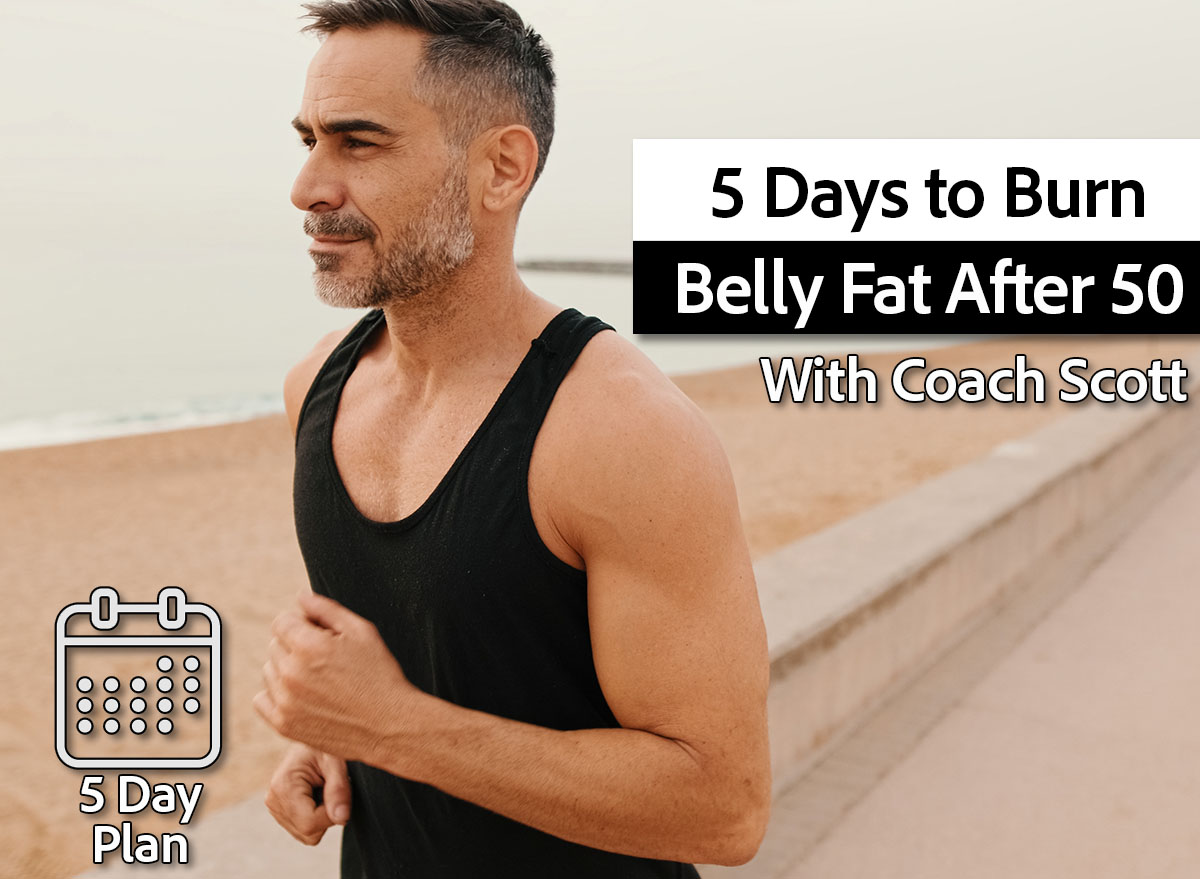
Everyone’s body changes after reaching 50 years of age, and dealing with stubborn belly fat is always a challenge. If you need help with this, you’re in luck. We spoke with Scott “Spirit” Herman, certified personal trainer at Life Time Plymouth (Minnesota), to learn the only workout routine that seems to melt belly fat.
Before we get into specifics of Scott’s workout plan, it’s important to address why belly fat is so common after turning 50. The middle-age bulge can be caused by fad diets, hormonal changes, and more.
“I believe 100% [of] it is lifestyle—what and how we eat, where we work, and how much we move. Lack of sleep is a factor as well, and leads to bad choices with food, screen time, etc.,” Scott says. “As a 51-year-old man myself, I have seen first-hand my body change from the skinny kid that could eat anything to the guy that still wants to eat anything but shouldn’t.”
Sound familiar?
Belly fat is not just frustrating to deal with—it’s also unhealthy. One of the biggest health risks of belly fat is visceral fat.
“Visceral fat is fat that is stored deep in the abdominal area surrounding many organs including the liver, intestines, and pancreas,” Scott explains.
Visceral fat can lead to heart disease (especially in men over 50), type-2 diabetes, high blood pressure, certain cancers (like colon and prostate), and cognitive decline.
The Best Workout To Fight Belly Fat
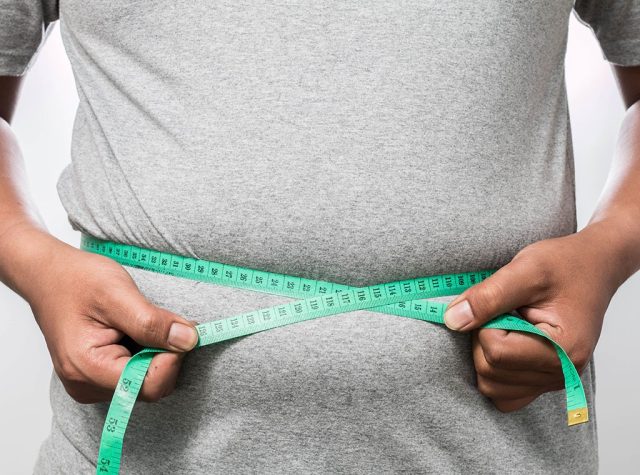
To combat belly fat, Scott recommends a three-day strength/two-day cardio routine—and the reason for combining the two kinds of exercise is simple.
“When we do cardio we burn fat then, and when we add a weight routine into the mix, we build muscle which burns fat long term. This is why we need both cardio and strength,” he explains.
Day 1: Cardio (30-60 minutes)

Perform a longer, slow/steady-state cardio workout to assist your body in burning fat.
For this cardio day, Scott recommends brisk walking, using the treadmill, biking, rowing, or swimming.
Day 2: Strength Training
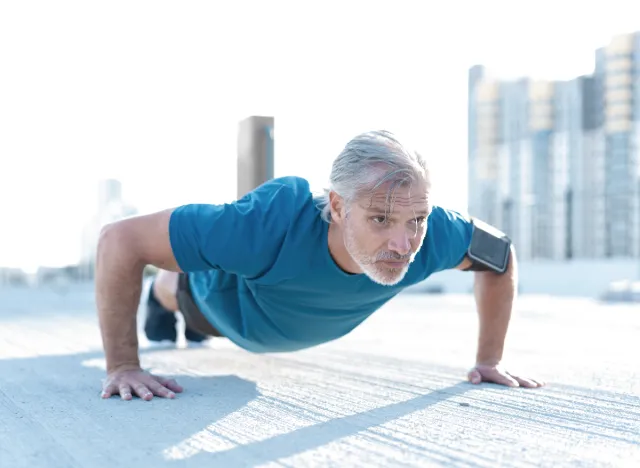
On Day 2, you will train three body parts and the core.
- Chest (i.e. barbell/dumbbell bench press, pushup to plank tap, dumbbell chest fly on a stability ball)\
- Biceps (i.e. alternating dumbbell bicep curl)
- Triceps (i.e. tricep dip, close-grip pushups)
- Core (i.e. plank, bicycles, Russian twist)
Day 3: Cardio/High-Intensity Interval Training (15-30 minutes)

Perform a fast/slow combo high-intensity interval training (HIIT) to fire up your calorie deficit. You will continue burning calories long after you finish.
For this cardio day, Scott recommends spending time on a rower or bike, as it’s simpler to speed up and then slow down. But you can also choose a treadmill, walk, or swim.
Day 4: Strength Training
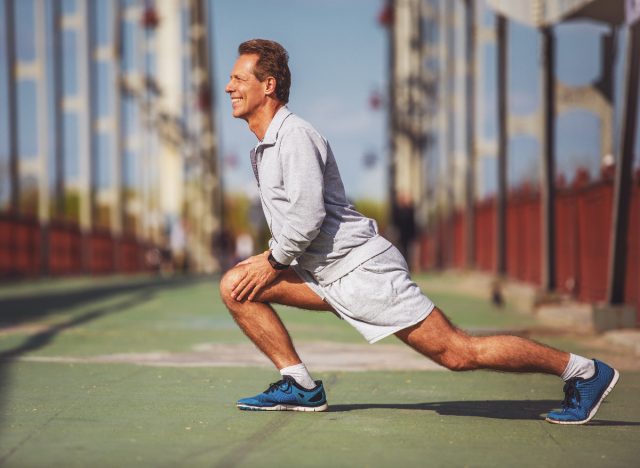
On Day 4, you will once again train three different body parts and the core.
- Legs (i.e. lunges, squats)
Back (i.e. renegade rows, bent-over rows)
Shoulder (i.e. shoulder press, push press, overhead carry)
Core (i.e. side plank, leg lift, superhero)
Day 5: Rest

It’s essential to carve out ample time to rest, which means no screen time or very limited amount of time on devices. Scott recommends the following activities:
- Yoga
- Meditation
- Slow nature walk
Day 6: Total-Body
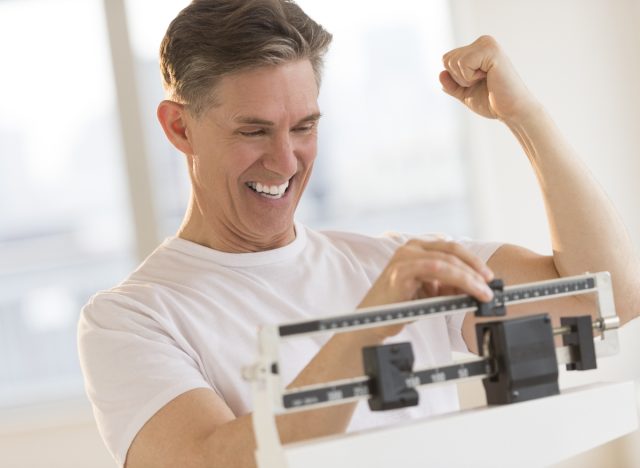
On Day 6, Scott suggests starting with bigger muscles and core last.
“The reasoning behind why I do core last is in my routines I am consistently engaging my core, so I want my core fresh and ready for the workloads on the rest of the body … I start with the bigger muscles first. I do core last, while other trainers do core first.”
It’s a matter of preference; test out what works best for you.
- Legs
- Chest
- Back
- Triceps
- Biceps
- Shoulders
- Core
Day 7: Rest

- Yoga
- Meditation
- Slow nature walk.